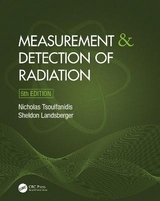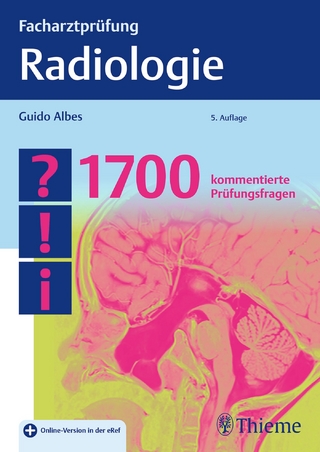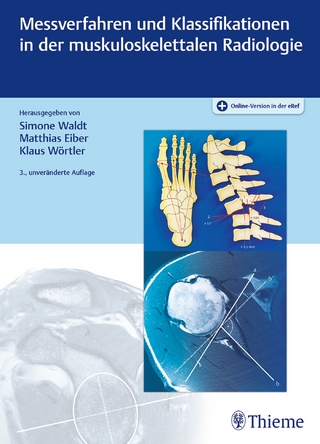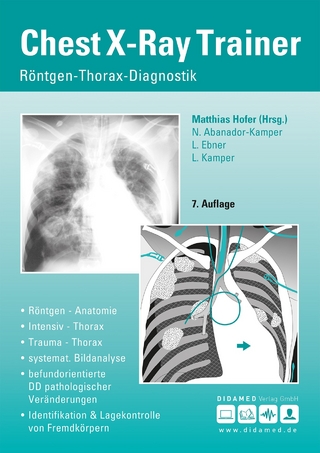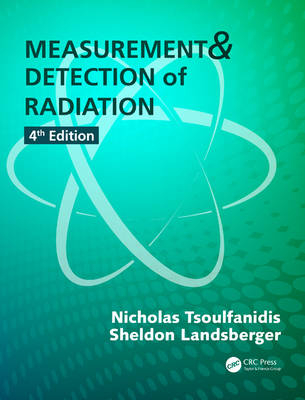
Measurement and Detection of Radiation
Apple Academic Press Inc. (Verlag)
978-1-4822-1549-6 (ISBN)
- Titel erscheint in neuer Auflage
- Artikel merken
Since the publication of the bestselling third edition, there have been advances in the field of radiation detection, most notably in practical applications. Incorporating these important developments, Measurement and Detection of Radiation, Fourth Edition provides the most up-to-date and accessible introduction to radiation detector materials, systems, and applications.
New to the Fourth Edition
New chapters on nuclear forensics and nuclear medicine instrumentation, covering basic principles and applications as well as open-ended problems that encourage more in-depth research
Updated references and bibliographies
New and expanded problems
As useful to students and nuclear professionals as its popular predecessors, this fourth edition continues to carefully explain the latest radiation detector technology and measurement techniques. It also discusses the correct ways to perform measurements and analyze results following current health physics procedures.
Nicholas Tsoulfanidis is a nuclear engineering professor emeritus of the Missouri University of Science & Technology and an adjunct professor at the University of Nevada, Reno. He is an active member and Fellow of the American Nuclear Society and the author of the book The Nuclear Fuel Cycle. He was the editor of the international journal Nuclear Technology from 1997 to 2015. He has been a recipient of the Glenn Murphy Award from the Nuclear and Radiological Division of the American Society of Engineering Education and the Holly Compton Award from the American Nuclear Society. His research focuses on radiation transport, radiation protection, and the nuclear fuel cycle. Sheldon Landsberger is a professor in the Nuclear and Radiation Engineering Program in the Department of Mechanical Engineering at the University of Texas at Austin, where he currently holds the Texas Atomic Energy Research Foundation Professorship in the Cockrell School of Engineering. An active member of the American Nuclear Society, he has been a recipient of the Glenn Murphy Award from the Nuclear and Radiological Division of the American Society of Engineering Education and the Holly Compton Award from the American Nuclear Society. His experimental research projects encompass fundamental nuclear physics, applied nuclear analytical techniques in environmental applications, and nuclear forensics.
Introduction to Radiation Measurements
What Is Meant by Radiation?
Statistical Nature of Radiation Emission
Errors and Accuracy and Precision of Measurements
Types of Errors
Nuclear Instrumentation
Errors of Radiation Counting
Introduction
Definition of Probability
Basic Probability Theorems
Probability Distributions and Random Variables
Location Indexes (Mode, Median, Mean)
Dispersion Indexes, Variance, and Standard Deviation
Covariance and Correlation
Binomial Distribution
Poisson Distribution
Normal (Gaussian) Distribution
Lorentzian Distribution
Standard, Probable, and Other Errors
Arithmetic Mean and Its Standard Error
Confidence Limits
Propagation of Errors
Goodness of Data—χ2 Criterion—Rejection of Data
Statistical Error of Radiation Measurements
Standard Error of Counting Rates
Methods of Error Reduction
Minimum Detectable Activity
Detector Dead-Time Correction and Measurement of Dead Time
Loss-Free Counting and Zero Dead Time
Review of Atomic and Nuclear Physics
Introduction
Elements of Relativistic Kinematics
Atoms
Nuclei
Nuclear Binding Energy
Nuclear Energy Levels
Energetics of Nuclear Decays
Radioactive Decay Law
Nuclear Reactions
Fission
Energy Loss and Penetration of Radiation through Matter
Introduction
Mechanisms of Charged-Particle Energy Loss
Stopping Power due to Ionization and Excitation
Energy Loss due to Bremsstrahlung Emission
Calculation of dE/dx for a Compound or Mixture
Range of Charged Particles
Stopping Power and Range of Heavy Ions (Z > 2, A > 4)
Interactions of Photons with Matter
Interactions of Neutrons with Matter
Gas-Filled Detectors
Introduction
Relationship between High Voltage and Charge Collected
Various Types of Gas-Filled Detectors
Ionization Chambers
Proportional Counters
Geiger–Müller Counters
Gas-Flow Detectors
Rate Meters
General Comments about Construction of Gas-Filled Detectors
Applications of Gas-Filled Detectors
Scintillation Detectors
Introduction
Inorganic (Crystal) Scintillators
Organic Scintillators
Gaseous Scintillators
Relationship between Pulse Height and Energy and Type of Incident Particle
Photomultiplier Tube
Assembly of a Scintillation Detector and the Role of Light Pipes
Dead Time of Scintillation Detectors
Sources of Background in a Scintillation Detector
Phoswich Detector
Semiconductor Detectors
Introduction
Electrical Classification of Solids
Semiconductors
P–N Junction
Different Types of Semiconductor Detectors
Radiation Damage to Semiconductor Detectors
Relative and Absolute Measurements
Introduction
Geometry Effects
Source Effects
Detector Effects
Relationship between Counting Rate and Source Strength
Reference Materials for Relative and Absolute Measurements
Introduction to Spectroscopy
Introduction
Definition of Energy Spectra
Measurement of an Integral Spectrum with a Discriminator
Measurement of a Differential Spectrum with a Single-Channel Analyzer
Relationship between Pulse-Height Distribution and Energy Spectrum
Energy Resolution of a Detection System
Determination of the Energy Resolution: The Response Function
Importance of Good Energy Resolution
Brief Description of a Multichannel Analyzer
Calibration of a Multichannel Analyzer
Electronics
Introduction
Resistance, Capacitance, Inductance, and Impedance
Differentiating Circuit
Integrating Circuit
Delay Lines
Pulse Shaping
Timing
Coincidence–Anticoincidence Measurements
Pulse-Shape Discrimination
Preamplifiers
Amplifiers
Analog-to-Digital Converters
Multiparameter Analyzers
High Count Rates
Digital Processing
Data Manipulation
International Atomic Energy Agency Nuclear Electronics Manuals
Data Analysis Methods
Introduction
Curve Fitting
Interpolation Schemes
Least-Squares Fitting
Folding and Unfolding
Data Smoothing
Quality Assurance and Quality Control
Photon (γ-Ray and X-Ray) Spectroscopy
Introduction
Modes of Energy Deposition in the Detector
Efficiency of X-Ray and γ-Ray Detectors: Definitions
Detection of Photons with NaI(Tl) Scintillation Detectors
Detection of Gammas with Ge Detectors
Detection of X-Rays with a Si(Li) Detector
CdTe, CZT, Hgl2, LaBr, and LaCl2 Detectors as Gamma Spectrometers
Charged-Particle Spectroscopy
Introduction
Energy Straggling
Electron Spectroscopy
Alpha, Proton, Deuteron, and Triton Spectroscopy
Heavy-Ion (Z > 2) Spectroscopy
Time-of-Flight Spectrometer
Detector Telescopes (E dE/dx Detectors)
Position-Sensitive Detectors
Neutron Detection and Spectroscopy
Introduction
Neutron Detection by A (n, Charged Particle) Reaction
Fission Chambers
Neutron Detection by Foil Activation
Measurement of a Neutron Energy Spectrum by Proton Recoil
Detection of Fast Neutrons Using Threshold Activation Reactions
Neutron Energy Measurement with a Crystal Spectrometer
Time-of-Flight Method
Compensated Ion Chambers
Self-Powered Neutron Detectors
Concluding Remarks
Activation Analysis and Related Techniques
Introduction
Selection of the Optimum Nuclear Reaction
Preparation of the Sample for Irradiation
Sources of Radiation
Irradiation of the Sample
Counting of the Sample
Analysis of the Results
Sensitivity of Activation Analysis
Interference Reactions
Advantages and Disadvantages of the Activation Analysis Method
Prompt Gamma Activation Analysis
Neutron Depth Profile
Neutron Radiography
Health Physics Fundamentals
Introduction
Units of Exposure and Absorbed Dose
Relative Biological Effectiveness: Dose Equivalent
Dosimetry for Radiation External to the Body
Dosimetry for Radiation inside the Body
Internal Dose Rate Time Dependence: Biological Half-Life
Biological Effects of Radiation
Radiation Protection Guides and Exposure Limits
Health Physics Instruments
Proper Use of Radiation
Health Physics within Nuclear Power Plants and Radiological Facilities
Nuclear Forensics
Introduction
Nuclear Forensics Instrumentation
Chronometry
Unmanned Aerial Vehicles Used for Radiation Detection
Instrumentation in Nuclear Medicine
Introduction
Areas of Nuclear Medicine
Imaging Technologies
Dose Calibrator
Novel Radiation Detection Systems in Nuclear Medicine
Production of Isotopes by Accelerators or Nuclear Reactors
Commercially Available Nuclear Medicine Imaging Systems
Appendices
Index
Problems, References, and Bibliography appear at the end of each chapter.
| Zusatzinfo | 69 Tables, black and white; 380 Illustrations, black and white |
|---|---|
| Verlagsort | Oakville |
| Sprache | englisch |
| Maße | 203 x 254 mm |
| Gewicht | 1420 g |
| Themenwelt | Medizinische Fachgebiete ► Radiologie / Bildgebende Verfahren ► Radiologie |
| Naturwissenschaften ► Physik / Astronomie ► Atom- / Kern- / Molekularphysik | |
| Technik ► Elektrotechnik / Energietechnik | |
| ISBN-10 | 1-4822-1549-7 / 1482215497 |
| ISBN-13 | 978-1-4822-1549-6 / 9781482215496 |
| Zustand | Neuware |
| Haben Sie eine Frage zum Produkt? |
aus dem Bereich
